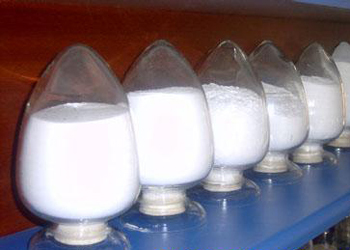Product (89)
- Intermediates (15)
- Apis (23)
- Formulations (22)
- Reagent (29)
Factory Tour (1)
Technology (10)
News (10)
Qaulity Control (2)
Certificates (2)
International Exhibitions (2)
Contact Detail (1)
Credit Report
Products Index
Company Info
NINGBO OUMAN PHARM CO LTD [China (Mainland)]
Business Type:Manufacturer
City: Ningbo
Province/State: Zhejiang
Country/Region: China (Mainland)
News
Application of biological buffer BIS-TRIS in creatine and muscle enzyme detection

Application of biological buffer BIS-TRIS in creatine and muscle enzyme detection
In the field of medical diagnosis, enzyme detection has always been an important means of assessing human health. Among them, creatinine enzyme (CK) is an enzyme that exists in cardiac muscle, skeletal muscle and smooth muscle, and changes in its activity level are often closely related to muscle damage, myocardial infarction and other diseases. Therefore, accurate and rapid detection of creatine myase activity is of great significance for the early detection and diagnosis of diseases.
In recent years, with the continuous development of biochemical technology, a buffer called bis(2-hydroxyethyl)amino(trihydroxymethyl)methane (BIS-TRIS) has shown unique performance in creatine muscle enzyme detection. The advantages. During the creatine enzyme detection process, BIS-TRIS can effectively maintain the acid-base balance of the reaction system and ensure the smooth progress of the enzymatic reaction. At the same time, the hydroxyl structure of BIS-TRIS also makes it have good hydrophilicity and biocompatibility, and can tightly combine with enzyme molecules to improve the stability and activity of the enzyme.
The role of BIS-TRIS in creatine and muscle enzyme detection
1. BIS-TRIS can provide a suitable pH environment. The activity of creatine myozyme is greatly affected by pH value. A pH that is too high or too low may cause the enzyme activity to be reduced or even inactivated. As a wide-range buffer, BIS-TRIS can maintain stable buffering capacity under different pH conditions, providing a stable reaction environment for the detection of creatine enzymes.
2. BIS-TRIS can improve the sensitivity and accuracy of detection. During the detection of creatine and muscle enzymes, BIS-TRIS can effectively reduce the influence of non-specific reactions and interfering substances and improve the quality of detection signals. At the same time, BIS-TRIS can also promote the binding of enzymes to substrates and improve the efficiency of enzymatic reactions, thereby further improving the sensitivity and accuracy of detection.
3. BIS-TRIS also has good stability and security. During the creatine enzyme detection process, BIS-TRIS is not easily affected by external factors such as temperature and light, and can maintain long-term stability. In addition, BIS-TRIS is non-toxic and harmless to the human body, and is suitable for clinical diagnosis and laboratory research.
4. BIS-TRIS also shows good compatibility and scalability in creatine and muscle enzyme detection. It can be combined with other reagents and detection methods to form a diversified detection system to meet different clinical and laboratory needs. For example, BIS-TRIS can be combined with fluorescent probes, electrochemical sensors and other technologies to achieve highly sensitive and specific detection of creatine myase.
In practical applications, when using BIS-TRIS for creatine myoenzyme detection, it should be noted that different detection systems and experimental conditions may require different BIS-TRIS concentrations. Therefore, when performing creatine myoenzyme detection, the concentration of BIS-TRIS needs to be optimized according to specific conditions to obtain good detection results. On the other hand, the activity of creatine myozyme is greatly affected by time and temperature. Therefore, in order to obtain accurate detection results, the reaction time and temperature need to be strictly controlled to ensure that the enzymatic reaction proceeds under good conditions.
Pre Page:
Molecular Diagnostics: A Trusted Option...
Next Page:
How to understand the biocompatibility...



